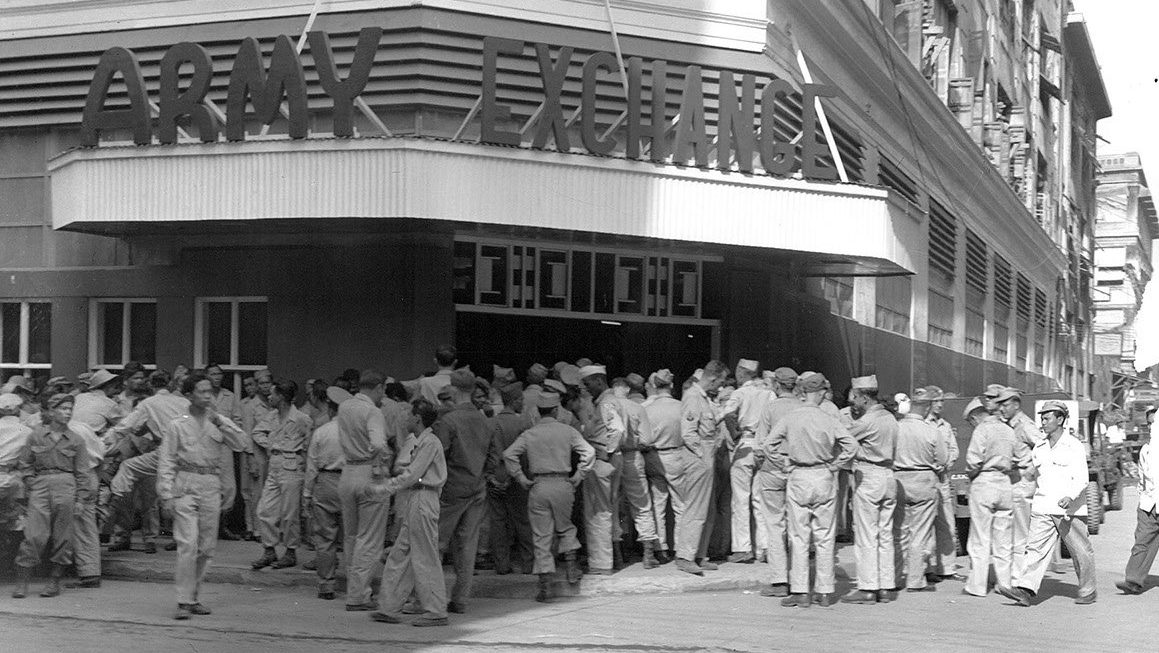#FlashbackFriday: 79 Years Ago: After the Battle of Manila Ends, an Exchange Quickly Opens in the Philippines

From Feb. 3 through March 3, 1945, U.S. and Filipino forces fought the Japanese to liberate Manila, the capital of the Philippines and its largest city. More than 100,000 Filipino civilians were killed during the battle, in addition to 1,000 American and 16,000 Japanese combatants, and the city was reduced to rubble. According to William Manchester, author of the Gen. Douglas MacArthur biography American Caesar, the only Allied capital that suffered more in World War II was Warsaw.
“Seventy percent of [Manila’s] utilities, 75% of the factories, 80% of the southern residential district and 100% of the business district was razed,” Manchester wrote.
Less than 10 days after the battle ended, on March 11, 1945—79 years ago this month—the Luzon Base Section Main Exchange opened in Manila (pictured above: the line for the grand opening) . It was considered the Philippines’ first post-World War II Exchange, although the war didn’t officially end until August. By April, 45 Exchange branches were in operation in the country. The Luzon Exchange was the beginning of what became the Philippine Exchange system.
The Exchange’s history in the Philippines dates to 1903, but post exchanges were closed in World War II after Japan invaded the country. After operations resumed in 1945, the Exchange maintained a presence in the Philippines until early 1992. During the Vietnam War, Clark Air Base in the Philippines was the first stop for nearly 600 POWs airlifted out of Hanoi. The Clark Exchange was the first store the former POWs would visit.
The modern Exchange closest to the Philippines is in Guam, more than 1,500 miles away.
Sources: Exchange Post archives; Official Gazette of the Republic of the Philippines (www.officialgazette.gov.ph); Los Angeles Times

